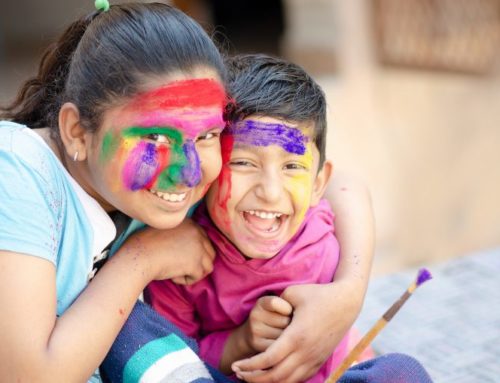By: Penfield Children’s Center
Reviewed by: Kelsey Sorvick, RN, Penfield Children’s Center
The winter months can be a great time for a multitude of outdoor activities, including skiing, snow trekking, sledding and building snowmen. Kids (and adults) often have a difficult time being cooped up for too long and a fresh bout of chilly air can definitely do the body and mind good. It is important to keep in mind though, that although they might not vocalize it, children can become affected by the cold rather quickly if they are not dressed appropriately. The thought of going back inside mid-snow angel is also tough for kids to do, so they might not tell you they are uncomfortably cold in time. In fact, the cold can actually damage a child’s skin with frostbite. Frostbite occurs when the skin freezes and can be mild, with just a few layers being affected, or more severe when it travels all the way into the bone or muscle. The toes, fingers, chin, nose, cheeks and ears are usually the most common areas for frostbite.
Signs that your child might have frostbite:
• His skin becomes numb or feels tingly
• Red skin becomes swollen and white
• Blistering
• Stiffness in the muscles and joints
If you suspect your child does have frostbite, bring him inside immediately and seek medical help. Frostbite on the feet might also make it difficult for your child to walk, so make sure to carry him. While waiting for a doctor to admit your child, make sure to keep him warm with a blanket and hot liquids. If fingers and/or toes are affected, have your child place them in warm water (not hot!) until he can feel that part of his body again. Do not rub the frostbitten area, as this could disrupt blisters on the skin and cause infection. Pay attention to your child’s movements and behavior as well. Extreme shivering, tiredness and a loss of coordination are signs he might also have hypothermia.
Another, less severe form of irritation from the cold is called frostnip. This usually affects the same areas of the body as frostbite, but does not require immediate medical attention. Frostnip usually makes the skin red and a bit numb. If you notice this on your child, remove him from the cold immediately and warm him inside with a blanket. If symptoms of frostbite begin to appear, seek medical help.
The best way to deal with frostbite is to prevent it from happening in the first place. Always dress your child appropriately for the weather and make sure to cover hands, feet and ears well. Dressing him in layers can help keep him warm. Also, bring your child inside regularly for snack breaks to warm up. Make sure to check for signs of frostbite or frostnip often. If the temperature is below 5 degrees Fahrenheit, do not allow your child to play outside for extended periods of time. Finally, be aware of pieces of clothing that might become wet from the snow. Change socks, mittens and any other articles of clothing affected.
In addition to the prevention tips above, it’s important to assess your child for risk factors before playing outside in the cold. Does your child have a medical condition that might affect how his body feels or does not feel cold such as poor blood flow or diabetes? Or, has your child had frostbite before? These and many other factors can affect how your child’s body responds to severe temperatures.
While it is important to be cautious, it’s also good to note that with a little precaution and extra care, your child can enjoy a fun-filled winter and avoid cabin fever.
What steps have you taken to help your child play safely outside in the cold?
References:
http://www.mayoclinic.org/diseases-conditions/frostbite/basics/definition/con-20034608
https://www.urmc.rochester.edu/encyclopedia/content.aspx?ContentTypeID=90&ContentID=P02820
http://kidshealth.org/en/parents/frostbite.html







